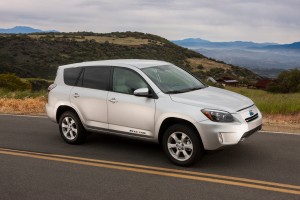Companies like Nissan and maybe General Motors have moved quickly and aggressively to build electric vehicles. But so far they seem to be the exception. Most big automakers have proceeded cautiously, or in some cases they have worked to obstruct progress on battery electrics through their lobbying efforts.
Why the resistance? Particularly when battery electrics offer a better driving performance and economically are going to be cost-competitive with internal combustion engines in the next decade or so?
Mike Barnard at Clean Technica offers a detailed and interesting read explaining the institutional barriers at these companies that prevent innovation from happening. First and foremost is what they would lose:
[T]o make a good electric car you have to start from the ground up and throw a bunch of stuff away:
- You have to throw away your frames. All of them. To build an effective, long-range, high-performing electric car, you have to start with something like the Tesla power slab at or below the level of the axles.
- You have to throw away all of your engine management software. All of the experience built up on eking amazing compromises out of an internal combustion engine is irrelevant when faced with an AC or DC motor.
- You have to throw away your internal combustion motor. No hybrid, serial hybrid, range extender BS. You have to throw it away. And start with the assumption that you are going to achieve range, fast charging, and performance by committing to electric motors and batteries.
- You have to throw away all of your mechanical steering and control systems. Everything is drive-by-wire. Anything else is a waste of space, weight, and time. All of those experienced engineers, all of those solutions that worked, gone. They all assume frames that you don’t have any more, and specific areas for mechanical linkages which are no longer there.
- You have to throw away all of your traction control systems. They are all designed around the ludicrously varying power output of an internal combustion engine, which changes literally every microsecond at every change of speed and driver input because those engines have such narrow power bands. Instead, you can rely on tremendously straightforward power to your wheels which is much more finely controllable. Your actual traction control results will be much better, but all of the hacks you built up will be useless.
- You have to throw away all of your emission controls experience and knowledge and technology and investments and branding. It’s completely unnecessary.
- You have to throw away your entire fuel storage and delivery system. The tank, the lines, the pumps, the injection systems, all of it. It’s all obsolete.
- You have to throw away your body panels. They all depend on the frame and the gas tank and the mechanical linkages taking up space that they don’t take up anymore.
- You have to throw away your seat mounting systems, and possibly your seats. They expect a lot of wasted space due to motor and transmission drive shaft hump and gas tank that just aren’t there anymore. They depend on a frame which doesn’t exist anymore.
Basically, these companies and their engineers would lose a lot of jobs and expertise to gamble on a new technology. It’s a classic case study in innovation and large companies. With Tesla and soon Apple and Google and others moving into this space, Big Auto could face some major turmoil if they don’t adapt soon.
Leave a Reply
You must be logged in to post a comment.



